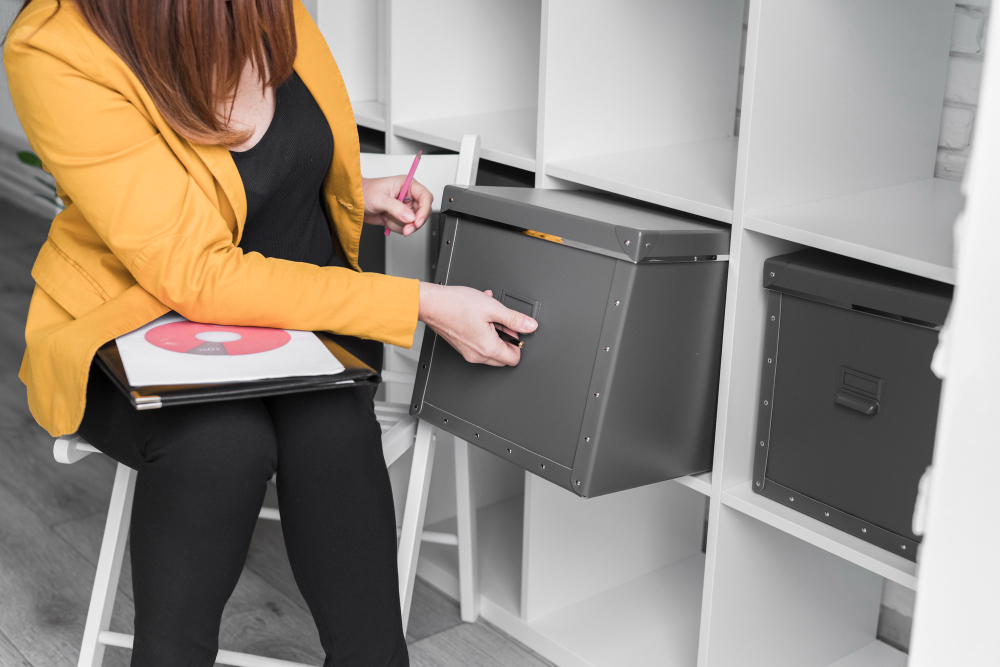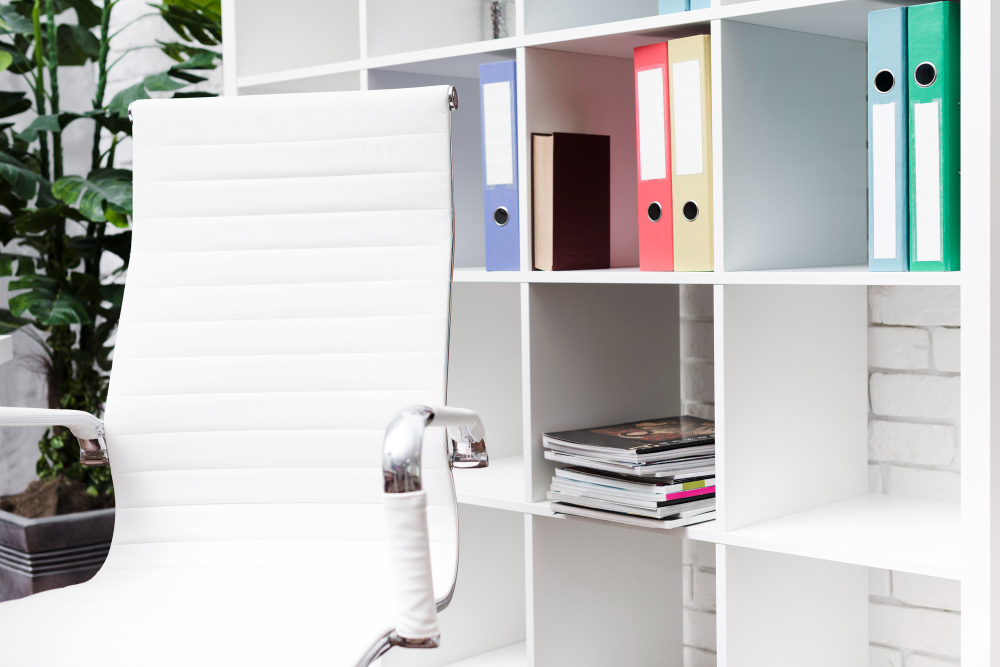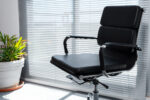
Lateral vs. Vertical File Cabinets
Choosing between lateral and vertical file cabinets is a small detail in the grand scheme of office planning. Still, in reality, it’s a decision that can significantly influence how efficiently your team operates.
As someone who has worked closely with dozens of organizations to optimize their office layouts, I have seen firsthand how a properly designed storage system can enhance workflow, improve ergonomics, and even influence how a team interacts with its space.
In this guide, we’ll explore every angle of the lateral vs. vertical file cabinet debate, from space-saving strategies to employee comfort, so that you can make a well-informed decision tailored to your work environment.
Understanding the Difference Between Lateral and Vertical File Cabinets
Before comparing the pros and cons of both options, it’s essential to understand what defines these two types of file cabinets and how they differ in structure and function.
Most people are familiar with vertical file cabinets as a traditional filing solution. They’re tall and narrow, with drawers that extend outward from front to back.
Due to their compact footprint, they have long been a staple in offices with limited space, providing a straightforward way to store letters or legally bound documents in an upright, top-to-bottom format.
By contrast, lateral file cabinets are wider and lower in height. Their drawers extend side to side, often spanning two to three feet in width.
Instead of reaching deep into a narrow drawer, users can scan a whole row of files side by side. This layout makes lateral cabinets increasingly popular in modern workplaces that prioritize both accessibility and visual organization.
While both options serve the same core purpose of document storage, their designs support very different use cases and workflows.
Choosing the right type comes down to understanding your spatial constraints, filing habits, and staff needs.
Evaluating Space and Footprint: How Each Cabinet Fits Into Your Office

When deciding between a vertical and lateral file cabinet, the first and most obvious factor is the amount of space available and the type of space it will occupy.
Vertical cabinets offer a clear advantage in conserving floor space. Typically no wider than 15 to 18 inches, these cabinets can fit into tight corners, narrow hallways, or unused wall nooks.
They’re instrumental in small offices, home workspaces, or anywhere where square footage is at a premium.
I’ve helped solo attorneys and startups maximize functionality in tiny offices by stacking vertical cabinets into unused alcoves or against support columns, creating vertical “walls of storage” without encroaching on floor traffic.
Lateral cabinets, by comparison, have a larger footprint. Most models range from 30 to 42 inches in width, which means they require more space for installation.
However, while they demand more horizontal space, they often use wall real estate more efficiently.
In open-plan or flexible workspaces, I’ve seen lateral file cabinets used not only as storage but as functional dividers separating departments or desks while doubling as display space or countertop surfaces.
This dual utility can actually save space in the long run, especially in creative or collaborative environments.
Ultimately, vertical might be the practical answer if you’re working in a tight or irregular space. But if your office layout allows for more open space and multifunctional furniture, lateral cabinets offer enhanced flexibility.
Accessibility and Workflow: How Your Team Uses Files Matters
File access is about more than where the cabinet fits. It’s about how your team interacts with documents daily.
Here’s where the structural difference between the two cabinet types has a significant impact on productivity.
Vertical file cabinets are typically best for storing files that are infrequently used. Because the drawers are deep and stack files front-to-back, it takes longer to browse, retrieve, and refile documents, particularly when they are located in lower or upper drawers.
For teams with static filing systems or archives that are only accessed occasionally, this isn’t a significant problem. However, in more dynamic environments, vertical cabinets can hinder your progress.
Lateral file cabinets, on the other hand, are designed for speed and efficiency. Their wider drawers make scanning a whole row of folders easy without needing to dig through them.
Many lateral cabinets also allow for front-to-back or side-to-side filing, providing users with more control over how they organize their documents.
In busy offices, medical clinics, or legal practices where charts and case files are frequently referenced, lateral cabinets significantly reduce file retrieval times.
I once worked with a fast-growing accounting firm where vertical cabinets were being used to store active client files.
The constant bending and reaching slowed staff down and contributed to physical strain. We replaced the vertical units with lateral cabinets arranged at waist height, and within weeks, both efficiency and employee comfort improved noticeably.
The bottom line? If your team needs to access files regularly or if multiple people need to retrieve documents simultaneously, lateral cabinets are likely the better fit.
Storage Capacity: Beyond the Drawer Count
One common misconception is that vertical file cabinets hold more documents simply because they’re taller.
While they may offer more drawers per unit, the overall storage volume often favors lateral cabinets.
Each drawer in a vertical cabinet holds a single row of files, all of which face forward. In contrast, lateral drawers can accommodate two rows, either one behind the other or in a wide, side-by-side arrangement.
For instance, while a standard four-drawer vertical cabinet might hold around 20,000 sheets, a two-drawer lateral cabinet could comfortably store 14,000 to 16,000 sheets while using significantly less vertical space.
But beyond sheet count, lateral cabinets tend to be more adaptable. I’ve seen architecture firms use them to store large-scale drawings, and HR departments use wide lateral drawers for bulky personnel folders and onboarding kits.
Their generous surface area also makes lateral cabinets ideal for housing binders, media files, and other non-standard items.
So when evaluating capacity, don’t just count drawers. Consider what’s going into them, how often it will be retrieved, and how flexible you need the system to be over time.
Ergonomics and Employee Comfort: A Crucial but Overlooked Factor
A well-designed office supports productivity and employee well-being, and filing systems are no exception. While focusing on cost and capacity is easy, ergonomics often has the most lasting impact.
Vertical file cabinets often require more physical effort to use. Accessing bottom drawers involves bending or kneeling, and reaching top drawers may necessitate step stools in tall units.
Over time, these repetitive movements can contribute to minor strains or even long-term discomfort, particularly for administrative staff who frequently file documents.
Lateral cabinets, by contrast, make files easier to reach. Most models are low enough that all drawers are accessible from a standing or even seated position, improving efficiency and reducing the risk of strain.
In fact, after consulting with a call center that experienced frequent complaints about back and shoulder pain among its support staff, we transitioned them from vertical to lateral cabinets.
Within three months, reported physical discomfort dropped by 70% simply due to better cabinet ergonomics.
If your team handles documents daily, consider lateral cabinets a convenience and a health-conscious investment.
Industry-Specific Applications
Different industries have varying filing requirements, and no single solution suits all. Over the years, I have seen the choice between lateral and vertical storage shift depending on the operational style.
In legal offices, the best results often come from a combination approach. Vertical cabinets are well-suited for archival storage, particularly for case files that are seldom revisited but must be preserved. For active cases, however, lateral cabinets are the dominant choice.
In one firm, we implemented a color-coded lateral filing system for litigation, contracts, and family law documents. It streamlined file retrieval and helped reduce misfiling.
Medical practices rely heavily on fast and frequent file access, often from multiple staff members at once.
Lateral cabinets, especially those strategically placed around nurse stations, enable simultaneous file retrieval and quick re-shelving.
I’ve even implemented dual-sided lateral cabinets in clinics, allowing access from both the hallway and the exam room, a game-changer for efficiency.
Creative agencies and design studios often use lateral cabinets for storage and presentation. They double as product sample display surfaces or inspiration mood boards. Their broad, flat tops offer added utility that vertical cabinets simply can’t match.
Making the Right Choice: A Thoughtful Decision Process
Choosing the ideal filing system isn’t about what’s most popular. It’s about what aligns with your day-to-day realities.
Think carefully about how your space is used, who accesses files, and what materials you need to store.
Budget will always be a consideration, but long-term efficiency and comfort should also weigh heavily in the decision.
While vertical cabinets are typically more affordable and easier to fit into tight areas, and are great for more office spacing, they may limit your workflow over time.
Lateral cabinets cost more upfront, but their ergonomic design, enhanced visibility, and broader functionality often pay dividends in the long run. In many offices, a hybrid approach is most effective.
Use lateral cabinets in high-traffic or shared areas where quick access is required, and keep vertical cabinets in back rooms or less frequently used areas for archival storage. This strategy combines the strengths of both systems, offering flexibility without compromise.
FAQs: Lateral vs. Vertical File Cabinets
- What is the difference between a lateral and vertical file cabinet?
Ans: A Lateral file cabinet is wider and shorter, with drawers that extend from side to side. It allows you to view files in a horizontal row, making it easier to scan and retrieve documents quickly. In contrast, a vertical file cabinet is taller and narrower, with drawers that extend front to back. Files are typically organized in deep stacks, one behind the other. Lateral cabinets often offer easier access and better ergonomics, while vertical cabinets save floor space and are ideal for archival storage. - What is a lateral file cabinet?
Ans: A lateral file cabinet is a type of office storage unit designed with wide drawers that open horizontally. These drawers can accommodate documents organized side by side or front to back, depending on the configuration. Lateral file cabinets are often used in professional environments where quick access, visibility, and shared file access are priorities. Their low height also allows them to double as surfaces for displays or additional workspace. - What is a vertical file cabinet
Ans: A vertical file cabinet is a tall, narrow storage unit featuring drawers that pull straight out toward the user. Files are typically stored in rows from front to back, which can make it harder to view many files at once, but is ideal for deep, high-density filing. Vertical cabinets are a space-efficient choice for small offices, home workspaces, or archival purposes where files are not accessed frequently. - What is a file cabinet?
Ans: A file cabinet is a piece of furniture used to organize, store, and protect documents. Available in various configurations, materials, and sizes, file cabinets enable businesses and individuals to manage paperwork efficiently. They typically come with drawers designed to hold folders in a structured format, such as letter- or legal-size hanging files. File cabinets are essential for maintaining organization, ensuring security, and supporting workflow in both professional and home environments. - What are the different types of file cabinets?
Ans: There are several types of file cabinets, each suited to different office needs and space constraints:
- Vertical File Cabinets: Tall and narrow, best for compact spaces or archival storage.
- Lateral File Cabinets: Wide and low, ideal for frequently accessed files and shared environments.
- Mobile File Cabinets: Compact, wheeled units that can be moved easily, often used under desks.
- Flat File Cabinets: Large, shallow drawers made for storing blueprints, artwork, or maps.
- Open Shelf Filing Systems: Shelving units that allow quick access to documents without drawers, often used in medical or legal settings for high-volume file access.
Final Thoughts: Filing Systems That Support How You Work
When thoughtfully chosen, the right file cabinet doesn’t just store documents; it also enhances the overall organization of your workspace. It supports your entire workflow.
It reduces clutter, shortens retrieval times, improves employee well-being, and helps you maximize your space.
I always tell my clients to think beyond the drawers. Consider movement, access, usage patterns, and long-term scalability. If possible, test a few options before making a commitment.
And don’t be afraid to mix and match based on your department’s individual needs. Your office deserves a filing solution that works as hard as you do.
Your employees will thank you for every moment saved and every strain avoided. Visit Cheaper Office Solutions for the great deals.

 17014 S. Vermont Ave #C, Gardena, CA 90247
17014 S. Vermont Ave #C, Gardena, CA 90247 (310) 856-3456
(310) 856-3456



